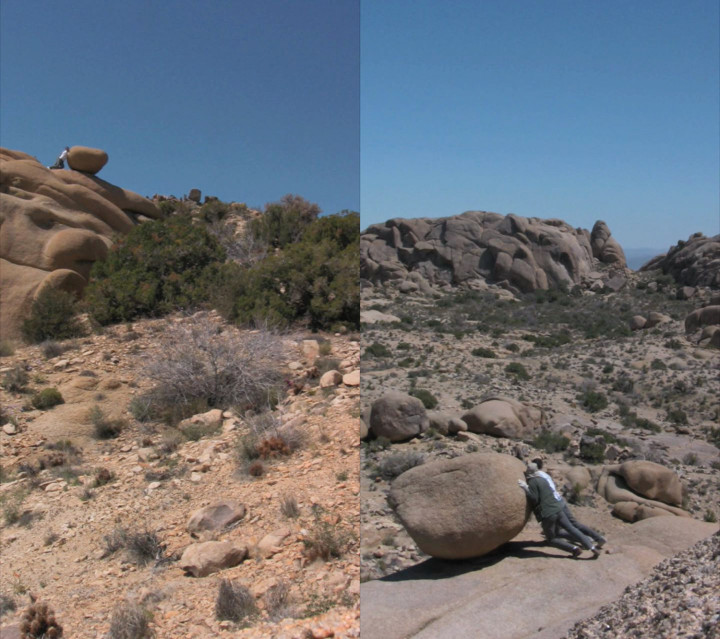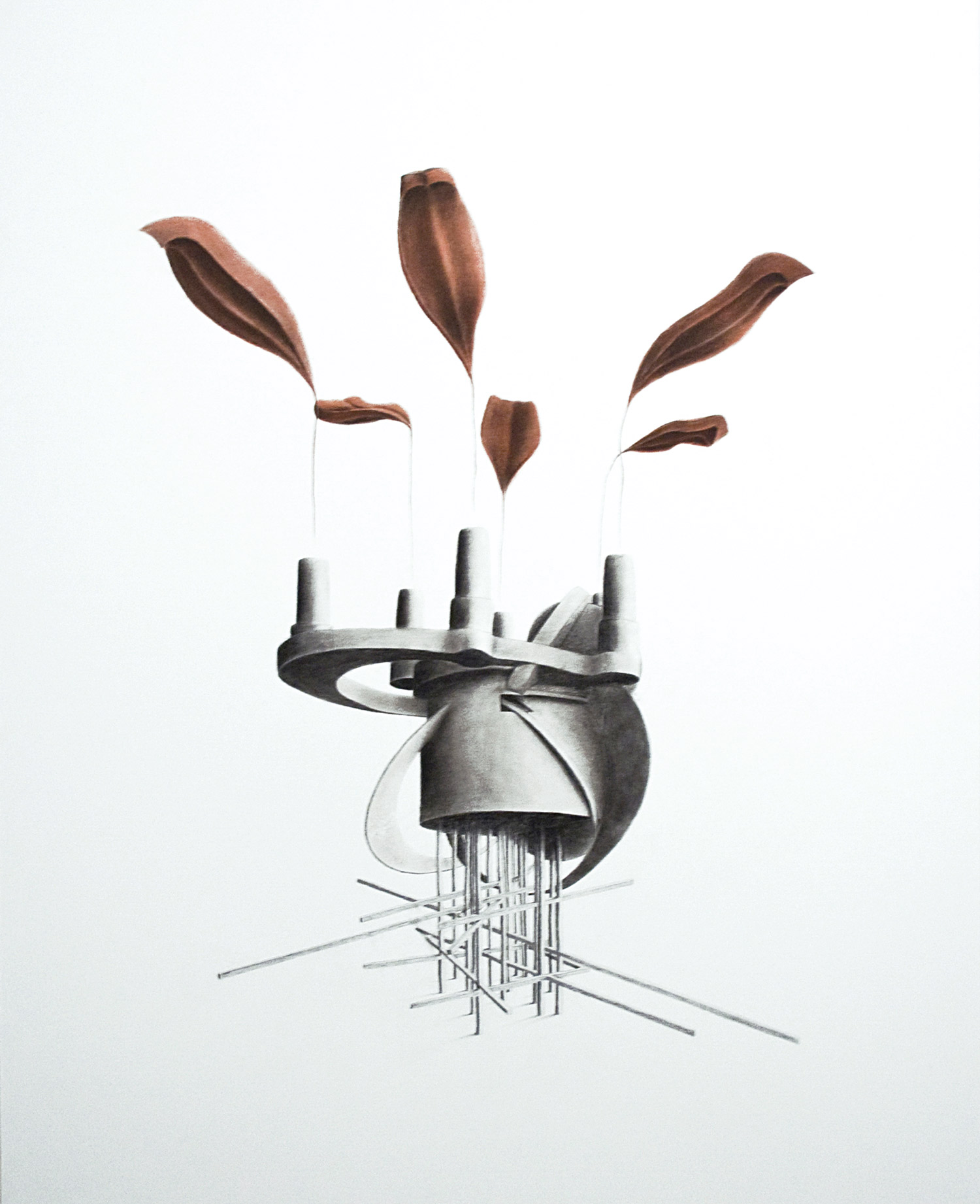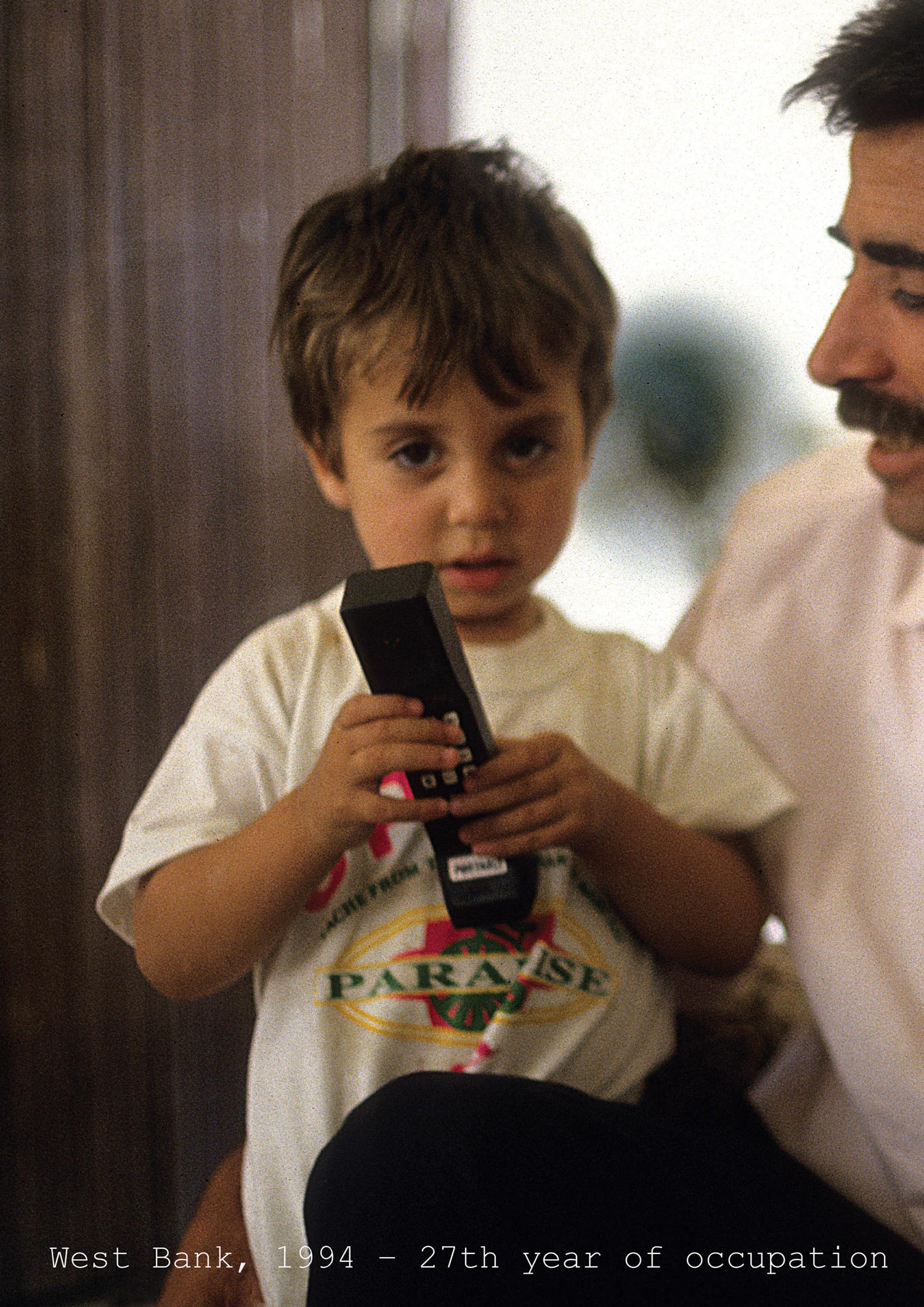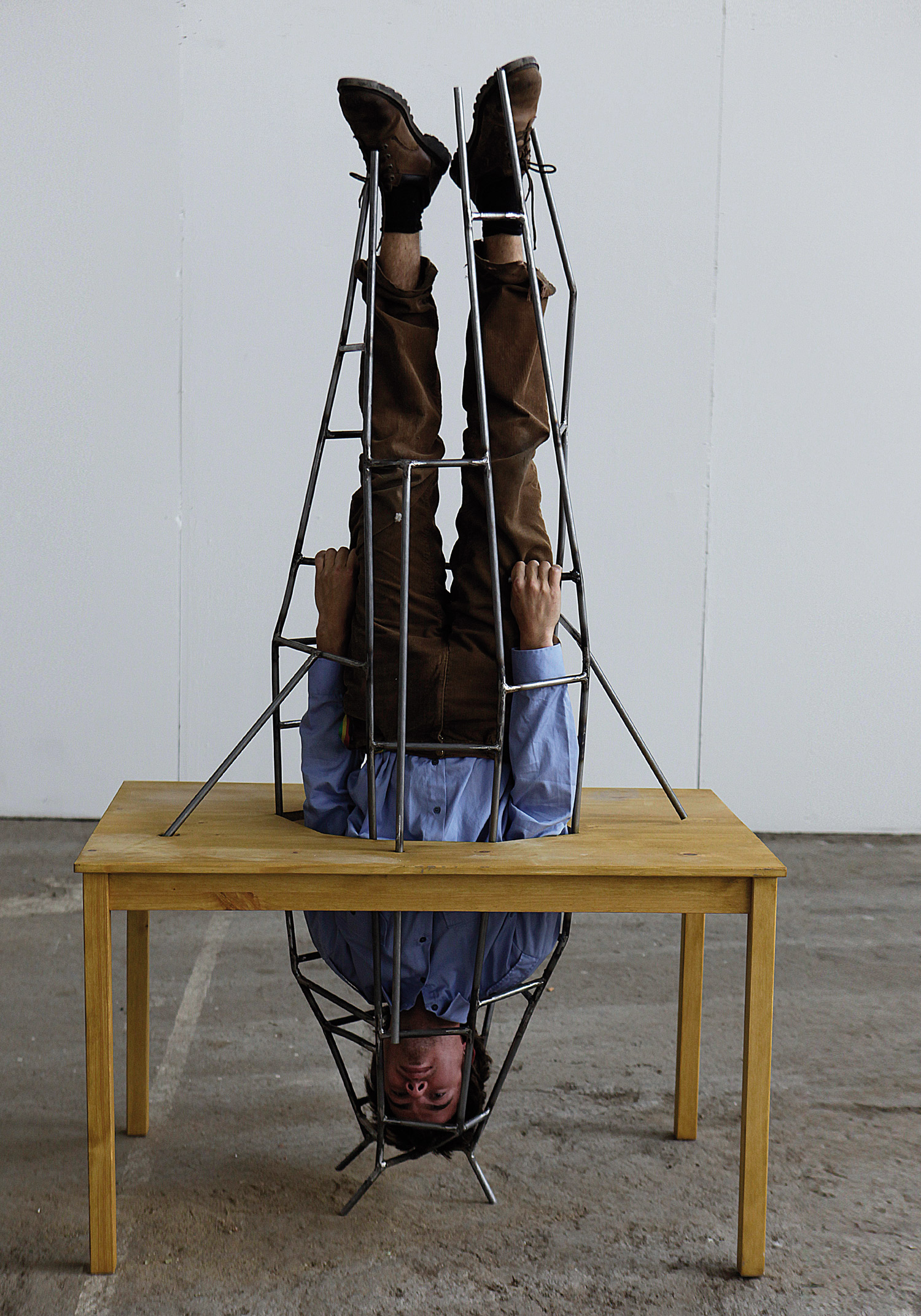
Looking at Fabian Marti measuring a table designed by Ettore Sottsass, I asked, “What are you doing?!” “I am going to do it exactly the same,” he answered.
Salvatore Lacagnina: Who are your muses?
Fabian Marti: My muse is the will to be an artist.
SL: What is your weakness?
FM: I am very much in need of being adored.
SL: What is a challenge for you?
FM: The challenge is to never accept what is, but at the same time to use what is to one’s advantage.
SL: How do you avoid trends?
FM: I make them.
SL: Who influenced you most as an artist and why?
FM: Francis Picabia for his now. Helmut Federle for his purity. Jack Goldstein for being honest. Helio Oiticica for his yet to be discovered. John Armleder for his kindness. Steven Parrino for combining superman with Malevich’s square. Beatrice Wood for not giving a fuck.
SL: For your new body of work you collected African 3-D masks bought on the Internet and integrated them into the work. How come?
FM: I’ve always liked the idea of appropriation — thanks, Elaine Sturtevant! African masks immediately connect to the avant-garde of the early 20th century, so they reach an art historical level; also their mystical and ritual aspect together with the fact that masks evoke portraiture fascinate me.
SL: How did you start combining digital imagery and photograms?
FM: I started using my scanner as a camera. Later I would use the negative film to draw on by scratching lines into it or by doing micro collages on it, in order to later blow it up. Working with Photoshop I realized that most of the effects stem from analogue effects. So I wondered what would happen if I merged effects done in Photoshop with effects done in the darkroom.

SL: You founded the artist-run space Amberg & Marti in Zurich in 2006. What was the idea behind it?
FM: Annette Amberg and I lived in the “hip” neighborhood of Zurich. At some point we thought: “Why not to use it as an exhibition space!?” The idea to make shows in our own place seemed very interesting. But it was also a way to introduce talents to the public: Pamela Rosenkranz and David Hominal had their first Zurich exhibition at Amberg & Marti Zeigen.
SL: You recently started working with film. How did this come about?
FM: I was a student at The Mountain School of Arts (MS^) in Los Angeles where I met the Italian artist Federico Spadoni. We would hang out a lot together. One day we decided to drive out to the desert. It was a very intense experience; coming from Europe one never experiences such vast, untouched terrain. We came up with the idea to do a ‘reversed’ Land Art piece: not to add something to the landscape but to take something off. We saw this huge boulder that was sitting on a cliff, much like in the famous Warner Bros. cartoons. We wanted to tip it over. So, a couple of weeks later we drove back to the desert with two sets of HD cameras. One would film the stone from beneath, the other from the top. Unfortunately we couldn’t get it to fall off the cliff.
SL: What would readers think if they knew that I never asked any of these questions?





